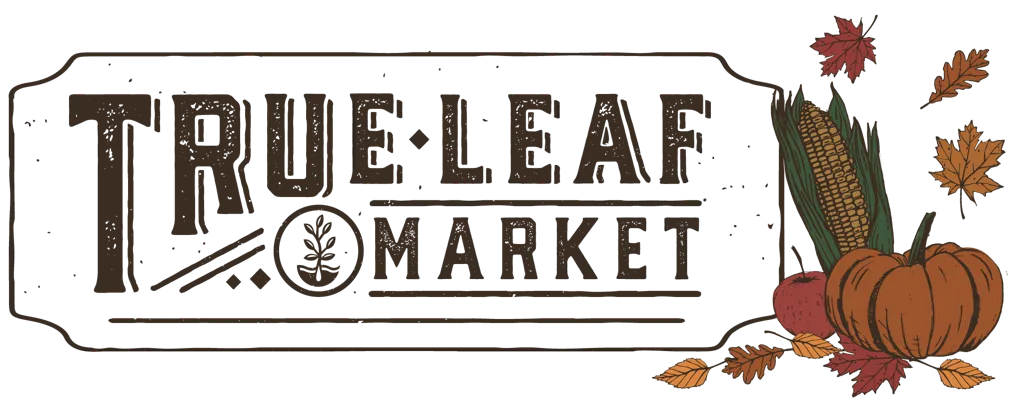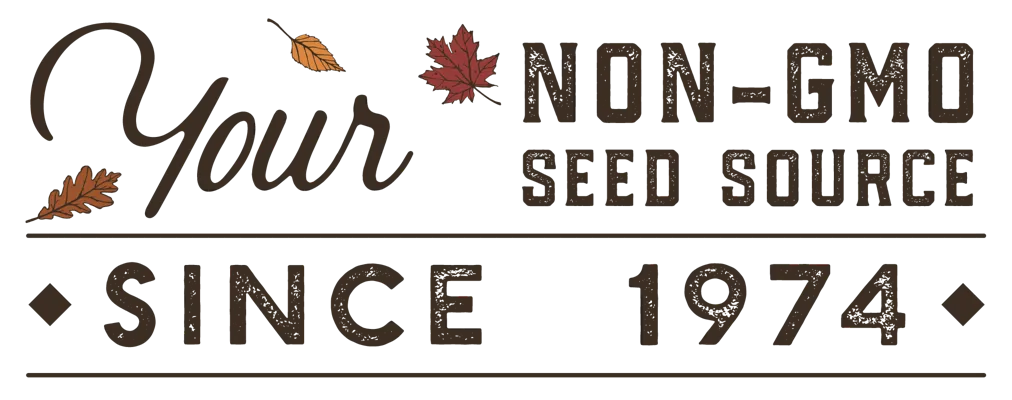Download Free Vegetable Growing Guide PDF
Growing Organic Kentucky Wonder Pole Beans in the Vegetable Garden
Direct sow Organic Kentucky Wonder beans after the last frost when soil temperatures reach 60 F. Amend the soil with compost or a balanced, organic fertilizer before planting. Plant seeds 1 inch deep, 4-6 inches apart, in rows 24-36 inches apart. Due to their climbing nature, these beans require a trellis or support system. Maintain the organic integrity of these beans by implementing organic pest control methods.
Organic Kentucky Wonder Pole Beans thrive in well-draining, fertile soil with a pH between 6.0 and 7.5. Regular watering is essential, especially during flowering and pod formation. Depending on climate conditions, deep watering once or twice weekly encourages healthy root growth. Beans grow well with corn, cucumbers, and radishes, which benefit from shared soil nutrients and growth patterns. Keep the area around the plants weed-free to reduce competition for nutrients. Mulching helps retain soil moisture and suppress weeds. Beans are nitrogen-fixing plants and generally do not require additional nitrogen fertilizer.
Harvesting Organic Kentucky Wonder Pole Beans
Organic Kentucky Wonder beans are harvested as snap beans when the pods are tender and about 6-7-10 inches long. Harvest regularly to encourage continued production. To harvest, simply snap or cut the pods from the vine. For those using the beans for shelling, wait until the pods fully mature and the seeds inside are plump.
About Organic Kentucky Wonder Pole Bean Garden Seeds
1936 James Seeds says about the "improved" cultivar... "A selection from this popular Pole Bean, which is of better quality and more heavy bearing than ordinary strains. The flavor is sweet and delicate; the pods are a deep green. 7 inches long and nearly 1/2 inch through, solid and deeply creased, and are entirely stringless until too old for use. The pods are clustered up the poles so thickly that they overlap each other like shingles, and they can be gathered in handfuls. There is no need to plant a succession of beans if you grow this variety; just keep the plants picked clean of mature pods at all times and you will gather tender beans until heavy frost."
These organic seeds are harvested from plants that were grown without the use of pesticides or herbicides. You can be sure our organic seeds are as free from synthetic chemical residue as possible so you can maintain the integrity of your organic garden!
While it can be called by many different names, this outstanding heirloom seed is reliable and dependable. You can always find it in any seed catalog carrying pole beans because it is always in demand!
Tips From Our Gardeners
"Based on my research, Kentucky Wonder Pole beans can thrive anywhere they have enough sun and good temepratures. I found specific notes saying they are good for Texas, California, Kentucky."
 |
- Lara Wadsworth, True Leaf Market Writer
|
Other Resources
Organic Kentucky Wonder Pole Bean Seeds Per Package:
- .5 oz - Wholesale - Approximately 50 Seeds
- 4 oz - Bulk Seeds - Approximately 400 Seeds
- 1 lb - Bulk Seeds - Approximately 1,600 Seeds
- 5 lb - Bulk Seeds - Approximately 8,000 Seeds
Non-GMO Organic Kentucky Wonder Pole Bean seeds are available for Fast Free Shipping on qualifying orders.
=======
ATTRIBUTES
Basic Info
| Latin Name: |
Phaseolus vulgaris
|
| Bean Sub-Type: |
Romano - Romano beans (also known as roman beans, cranberry beans, saluggia beans, gadhra beans, and rosecoco beans) are snap beans (edible pods) except for the shape, which is broad and flat, vs. the regular round cylindrical shape of regular snap beans. They are crunchy with a sweet flavor. |
| Organic Kentucky Wonder Pole Bean Color: |
Green, Brown |
| Organic Kentucky Wonder Pole Bean Flavor: |
Distinct, meaty, and rich. |
Growing Info
| Hardiness Zone: |
3, 4, 5, 6, 7, 8, 9, 10, 11 Annual Crop: Not Intended to Overwinter |
| Days to Maturity: |
65 |
| Days to Germination: |
5-10 |
| Seeding Depth: |
1 inch |
| Plant Spacing: |
4-6 inches |
| Row Spacing: |
24-36 inches |
| Plant Height: |
60-96 inches |
| Growth Habit: |
Vining |
| Soil Preference: |
Beans prefer well-draining, nutrient-rich, loamy soil with a pH of 6.0-6.8. As light feeders and nitrogen-fixing legumes, beans do not require nitrogen-heavy fertilizers. |
| Temperature Preference: |
Warmer (70-85 F). |
| Light Preference: |
Full Sun |
Other
| Direct Sow: |
Yes, direct sow when soil temperatures are reliably above 60 F. Planting with an inoculant may increase yields, but is certainly not required for a successful grow. |
| Start Indoors: |
Not Recommended. Beans grow best without any root disturbance. We recommend direct sowing instead of transplanting. |
| Bean Pollination: |
Beans are self-pollinating as they contain both the male and female parts within their flowers, unlike other fruit and vegetable plants. While they are self-pollinating, having a variety of pollinators and flowers around will improve yields by ensuring the greatest chances for pollinating events to occur. |
| Snap or Shell Bean: |
Snap - Snap beans have a fleshy edible pod. Snap beans are also commonly referred to as string beans or green beans (though not all snap beans are green). They are called snap beans because they make a snapping sound when you break them in half. |
| Pole or Bush Bean: |
Pole - Pole beans are vining-type plants that put out runners that grow very long or tall. Pole beans are so-called because they require a trellis, support, or wait for it… a pole. Pole beans require more effort than bush beans but may also be grown in containers with the right support. |
| Plant Width: |
6-8 inches |
| Growth Speed: |
Early - Ready for harvest around 45-65 days. |
| Deer Resistant: |
No |
| Germination Temperature: |
70-90 F |
| Pests and Diseases: |
Resistant to Bean Common Mosaic Virus (race 1, 15) and Rust. Beans are susceptible to beetles, aphids, spider mites, and cutworms. Look for signs of chewing, curling leaves, eggs on the undersides of leaves, and leaf discoloration. Keeping your bean plants clean from dust build-up and surrounded by a variety of plants to help deter and prevent pest damage. Beans are also susceptible to powdery mildew, bean blight, rust, and root rot. Maintain a regular watering schedule that avoids overly saturated soil. The roots need adequate time to air out between watering. This will also help prevent common fungal and bacterial diseases from developing. Good air circulation and applying water to the ground rather than the leaves will help maintain healthy bean plant growth. |
| Garden Size: |
Greenhouse, Garden Plot, Raised Bed, Container |
| Bean Use: |
Snap, shell, stir fry, soup, salad, fresh eating, canning, freezing, etc. |
| Climate Tolerance: |
Drought |




















